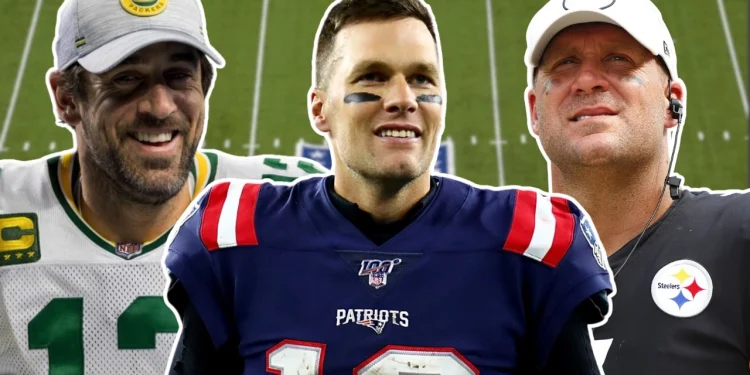The NFL regular season is a grueling marathon of athletic prowess, strategy, and endurance. Teams strive not just to make the playoffs, but to establish themselves as dominant forces throughout the season. Some teams, however, transcend the ordinary and set records that stand as benchmarks of excellence. In this article, we explore the 10 best NFL regular season records, delving into the teams, their performance, and the historical significance of their achievements.
From the undefeated 1972 Miami Dolphins to the dominant New England Patriots of 2007, these records are not just about winning games but about defining eras in NFL history. Each team on this list showcased extraordinary talent, coaching, and a bit of luck, cementing their place in the annals of football lore. Join us as we take a detailed look at these remarkable seasons and the stories behind them.
As we explore these legendary teams, we’ll see how they not only excelled on the field but also influenced the game of football itself. Their innovations in strategy, their relentless pursuit of perfection, and their ability to rise to the occasion under pressure have left indelible marks on the sport. These teams have become symbols of excellence, inspiring future generations to aim for greatness and reminding us of the thrilling possibilities that each NFL season holds.
Here are the Best NFL Season Records of All Time
1. 1972 Miami Dolphins (14-0)
The 1972 Miami Dolphins stand alone in NFL history as the only team to complete a perfect season. Coached by Don Shula and led by a balanced team that excelled in both offense and defense, the Dolphins’ 14-0 regular season record remains unmatched. This remarkable achievement culminated in a Super Bowl victory, making them the only team to have an undefeated season and win the championship.
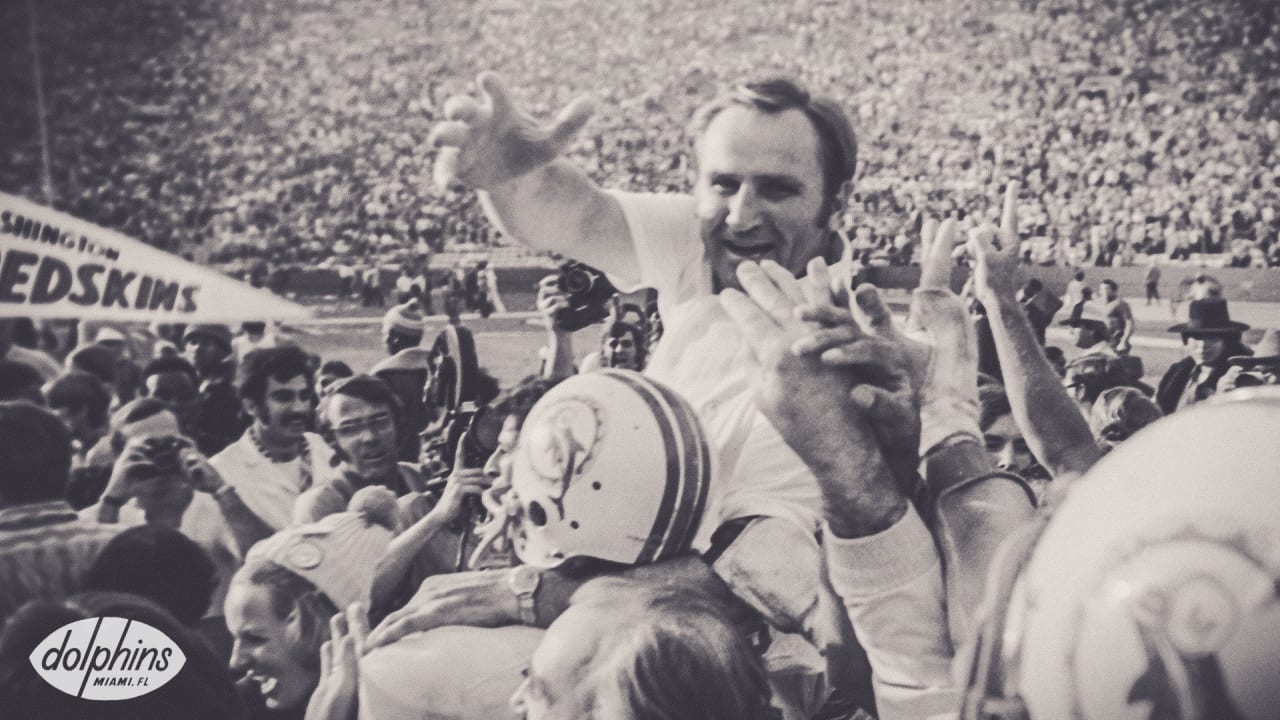
The Dolphins’ success was built on a robust running game, with Larry Csonka and Mercury Morris each rushing for over 1,000 yards. Their defense, known as the “No-Name Defense,” was a formidable unit that consistently shut down opposing offenses. The quarterback tandem of Bob Griese and Earl Morrall efficiently managed the games, ensuring the team capitalized on every opportunity.
The significance of the Dolphins’ perfect season extends beyond the numbers. It set a standard of excellence that future teams would strive to match. The 1972 Dolphins demonstrated the importance of a well-rounded team, where every player and every aspect of the game contributes to the overall success. Their legacy is celebrated annually, especially when the last undefeated team of the season finally loses, prompting the surviving members of the 1972 squad to toast their enduring record.
2. 2007 New England Patriots (16-0)
The 2007 New England Patriots came tantalizingly close to achieving the same perfection as the 1972 Dolphins. They completed the regular season with a flawless 16-0 record, showcasing an offensive juggernaut led by quarterback Tom Brady and wide receiver Randy Moss. Brady’s record-setting 50 touchdown passes, with 23 caught by Moss, redefined offensive success in the modern era.
Under the guidance of head coach Bill Belichick, the Patriots’ dominance was not just about their potent offense. Their defense, led by stalwarts like Tedy Bruschi and Rodney Harrison, played a crucial role in their unbeaten run. The team won games by large margins, demonstrating their superiority over opponents week after week.
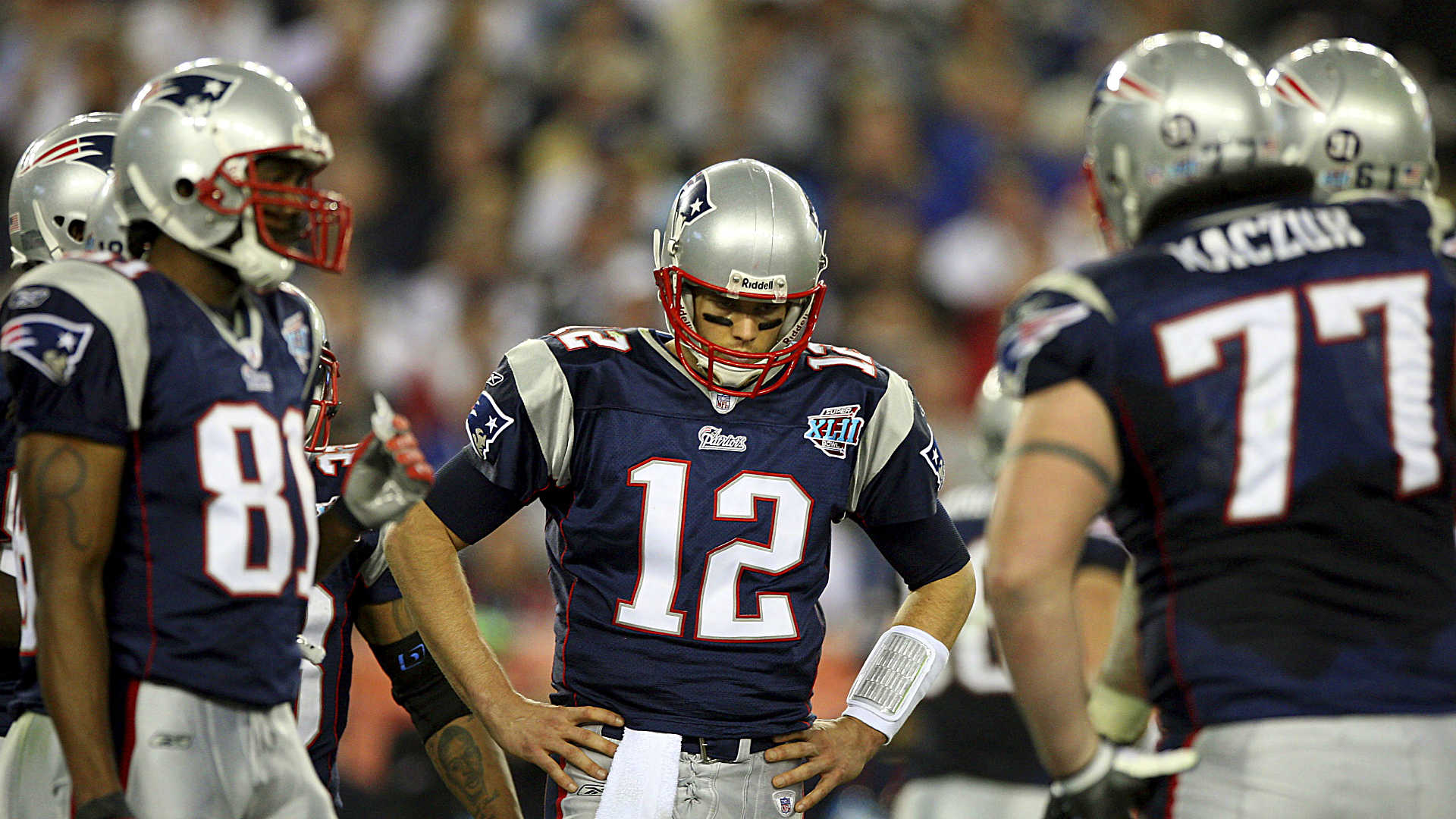
Despite their regular season success, the Patriots’ pursuit of perfection ended in the Super Bowl with a stunning loss to the New York Giants. This defeat has often been cited as a stark reminder of the unpredictability of football, where even the best-laid plans can falter. Nevertheless, the 2007 Patriots remain one of the greatest teams in NFL history, their regular season record a testament to their remarkable talent and execution.
The Patriots’ offensive prowess was unprecedented, and it wasn’t just Brady and Moss who made it happen. Wes Welker, a key acquisition that season, caught 112 passes for over 1,100 yards, proving to be an essential part of the offense. The running game, led by Laurence Maroney, provided balance, though it was the passing attack that truly defined this team. The offensive line, anchored by Matt Light and Logan Mankins, gave Brady the time he needed to dissect defenses, leading to a season where the Patriots scored an astounding 589 points, an average of nearly 37 points per game.
Defensively, the Patriots were anchored by a veteran group that included Mike Vrabel, Richard Seymour, and Adalius Thomas. This experienced unit allowed the fewest points in the league, complementing the high-powered offense perfectly. Their ability to shut down opposing teams while their offense racked up points made them a formidable opponent and a near-certainty to win each game.
3. 1985 Chicago Bears (15-1)
The 1985 Chicago Bears are often considered one of the most dominant teams in NFL history. Their 15-1 regular season record was just a prelude to their ultimate triumph in Super Bowl XX. Coached by Mike Ditka and led by defensive coordinator Buddy Ryan’s innovative “46 defense,” the Bears dismantled opponents with a ferocity rarely seen before or since.
Key to the Bears’ success was their intimidating defense, which included Hall of Famers like Mike Singletary, Richard Dent, and Dan Hampton. This unit not only stopped offenses but often scored points themselves, creating a sense of inevitability whenever the Bears took the field. Offensively, the Bears were no slouches either, with running back Walter Payton providing a steady and explosive presence.
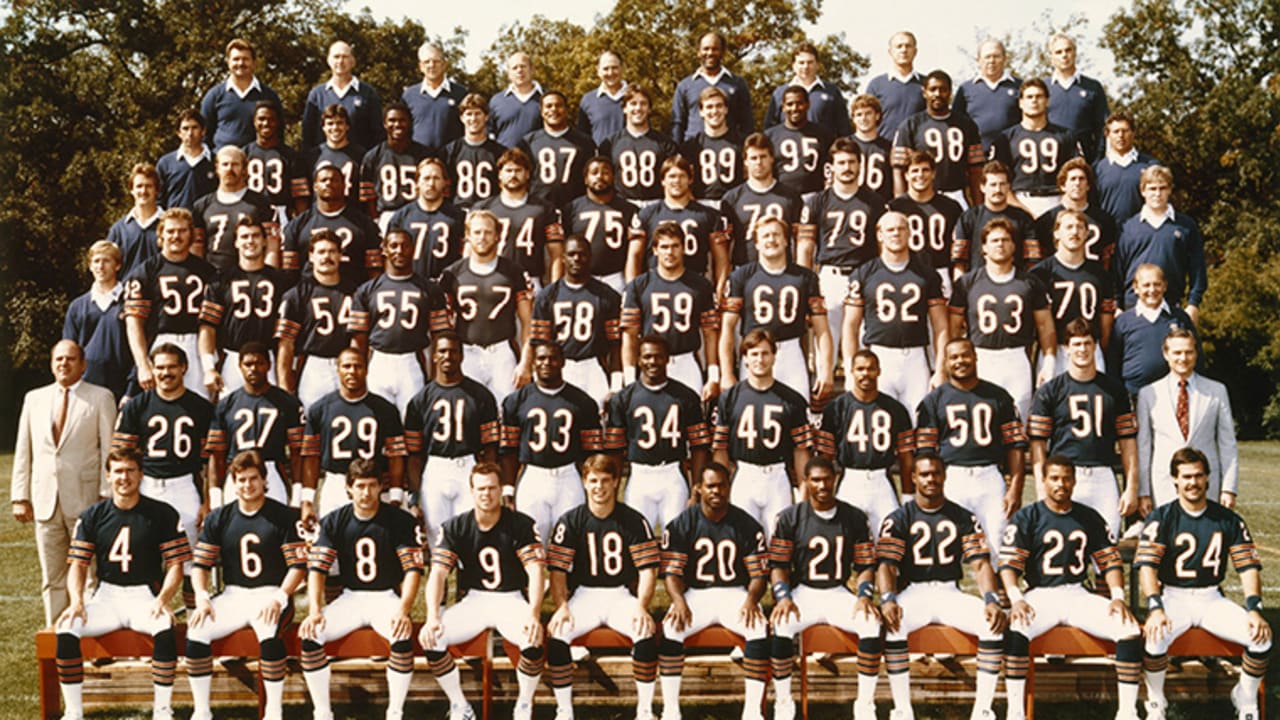
The 1985 season also saw the Bears produce the iconic “Super Bowl Shuffle” video, showcasing the team’s confidence and charisma. Their lone loss came against the Miami Dolphins, ensuring that the 1972 team’s perfect record remained intact. However, the Bears’ overall dominance that season, capped by a 46-10 rout of the New England Patriots in the Super Bowl, secures their place among the greatest teams in NFL history.
The Bears’ defense was not just good; it was revolutionary. The “46 defense” designed by Buddy Ryan disrupted conventional offensive schemes with its aggressive approach, focusing on putting maximum pressure on the quarterback. This strategy resulted in 64 sacks during the regular season, with Richard Dent alone accounting for 17.5. The defense also forced 54 turnovers, a testament to their disruptive presence on the field.
Offensively, while Walter Payton was the centerpiece, the Bears also received significant contributions from quarterback Jim McMahon, whose leadership and playmaking ability were crucial. McMahon’s penchant for the big play and his fearless approach endeared him to fans and teammates alike. The offensive line, led by Pro Bowlers Jay Hilgenberg and Jimbo Covert, provided the necessary protection and opened up running lanes, ensuring the offense could keep pace with the defense’s production.
4. 1984 San Francisco 49ers (15-1)
The 1984 San Francisco 49ers, under the leadership of head coach Bill Walsh and quarterback Joe Montana, crafted a season of near-perfection with a 15-1 record. This team was the epitome of Walsh’s innovative West Coast offense, characterized by precise passing and strategic play-calling that kept defenses off balance.
Joe Montana, known for his poise and precision, orchestrated the offense with surgical accuracy. Key targets like Dwight Clark and Freddie Solomon provided the receiving firepower while running back Roger Craig added a dual-threat dimension. The 49ers’ defense, often overshadowed by the offense, was a stalwart unit featuring players like Ronnie Lott and Keena Turner, who ensured the team was formidable on both sides of the ball.
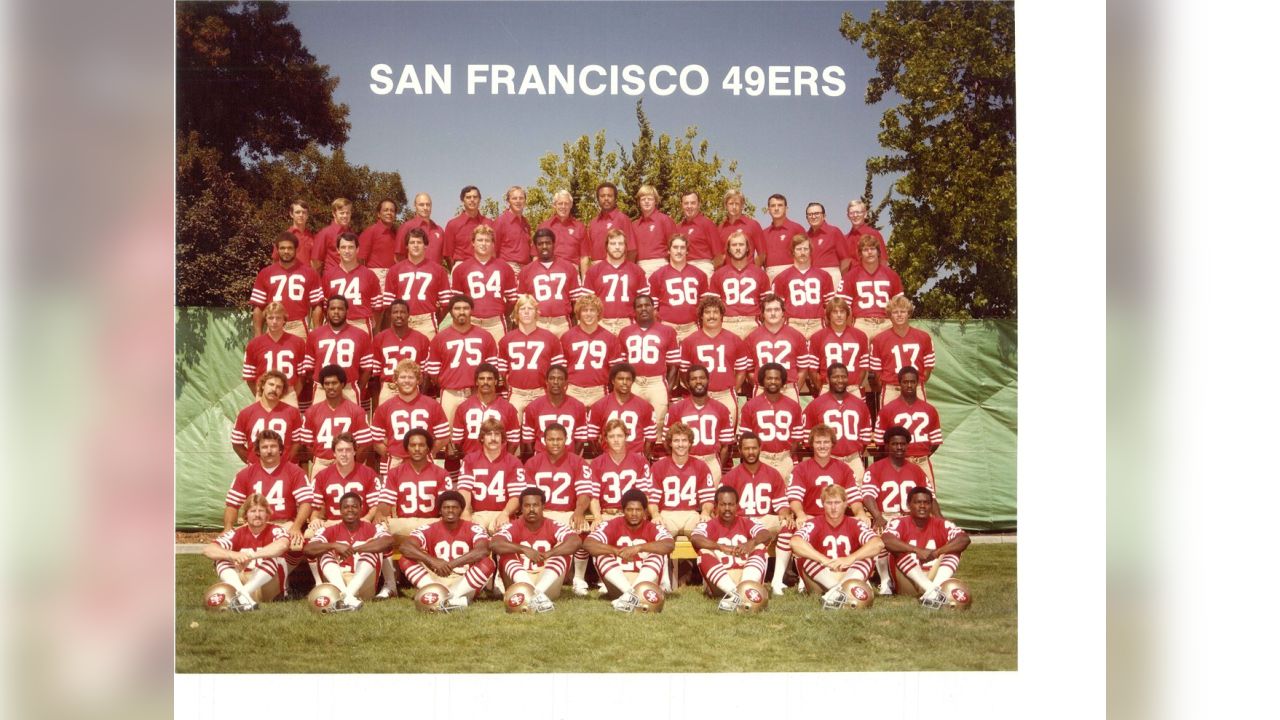
The 49ers’ regular season success translated seamlessly into the playoffs, where they continued their dominance. Their season culminated in a Super Bowl XIX victory over the Miami Dolphins, with Montana earning MVP honors. The 1984 49ers are remembered not just for their record but for revolutionizing how football was played, making their mark as one of the greatest teams in NFL history.
The 49ers’ West Coast offense was a significant departure from the traditional run-heavy approach prevalent in the NFL at the time. Instead, Walsh emphasized short, quick passes to spread the defense and create mismatches. Montana’s ability to execute this strategy was unparalleled, and his connection with Dwight Clark, particularly on third downs, was crucial. Roger Craig’s role as both a runner and receiver added another layer of complexity to the offense, making it nearly impossible for defenses to predict their next move.
Defensively, the 49ers were anchored by Hall of Famer Ronnie Lott, whose versatility allowed him to play both cornerback and safety at an elite level. The front seven, featuring Fred Dean and Dwaine Board, applied constant pressure on opposing quarterbacks, contributing to a defense that ranked among the best in the league. This balance of a high-powered offense and a stifling defense made the 1984 49ers a model of excellence.
5. 1998 Minnesota Vikings (15-1)
The 1998 Minnesota Vikings took the NFL by storm with their explosive offense, finishing the regular season with a 15-1 record. Under head coach Dennis Green, the Vikings were an offensive powerhouse led by quarterback Randall Cunningham and rookie sensation Randy Moss, whose deep-threat capabilities transformed the team’s attack.
Randy Moss’s impact was immediate and profound, as he set a rookie record with 17 touchdown receptions. Alongside Moss, veterans Cris Carter and Jake Reed formed a formidable receiving corps, while running back Robert Smith provided balance with a strong running game. The Vikings’ offense, coordinated by Brian Billick, set an NFL record by scoring 556 points, an average of nearly 35 points per game.
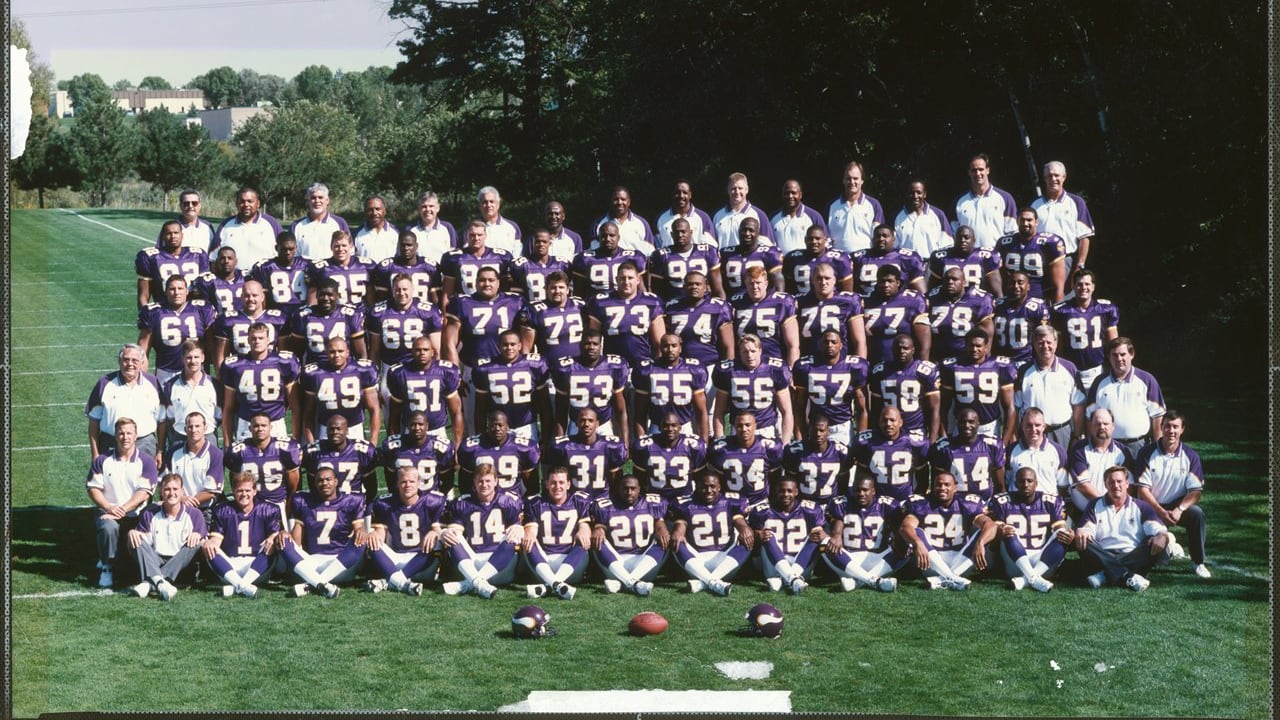
Despite their regular season dominance, the Vikings’ season ended in heartbreak with an overtime loss to the Atlanta Falcons in the NFC Championship Game. This defeat did not diminish the brilliance
of their regular season, where they showcased one of the most potent offenses in NFL history. The 1998 Vikings are remembered for their high-octane performances and the excitement they brought to the game.
Randall Cunningham’s resurgence was one of the most remarkable aspects of the Vikings’ season. After being out of the NFL in 1997, Cunningham returned with a vengeance, throwing for 3,704 yards and 34 touchdowns. His ability to extend plays with his legs, combined with his strong arm, made the Vikings’ offense incredibly dynamic. Randy Moss’s speed and athleticism created mismatches every week, while Cris Carter’s route running and hands provided a reliable target in critical situations.
The Vikings’ offensive line, anchored by Pro Bowlers Randall McDaniel and Jeff Christy, provided the necessary protection for Cunningham and opened running lanes for Robert Smith. Defensively, the Vikings were solid, with John Randle and Ed McDaniel leading a unit that could make stops when needed. However, the offense could score quickly and often defining the team’s identity.
6. 2004 Pittsburgh Steelers (15-1)
The 2004 Pittsburgh Steelers, led by rookie quarterback Ben Roethlisberger and veteran head coach Bill Cowher, achieved a remarkable 15-1 regular season record. Roethlisberger, stepping in for the injured Tommy Maddox, won all 13 of his starts, an unprecedented feat for a rookie quarterback.
The Steelers’ success was built on a powerful running game and a tenacious defense. Running back Jerome Bettis, nicknamed “The Bus,” led the ground attack, while a stout defense featuring players like Troy Polamalu and Joey Porter dominated opponents. The team’s identity was forged through physicality and discipline, hallmarks of Cowher’s coaching philosophy.
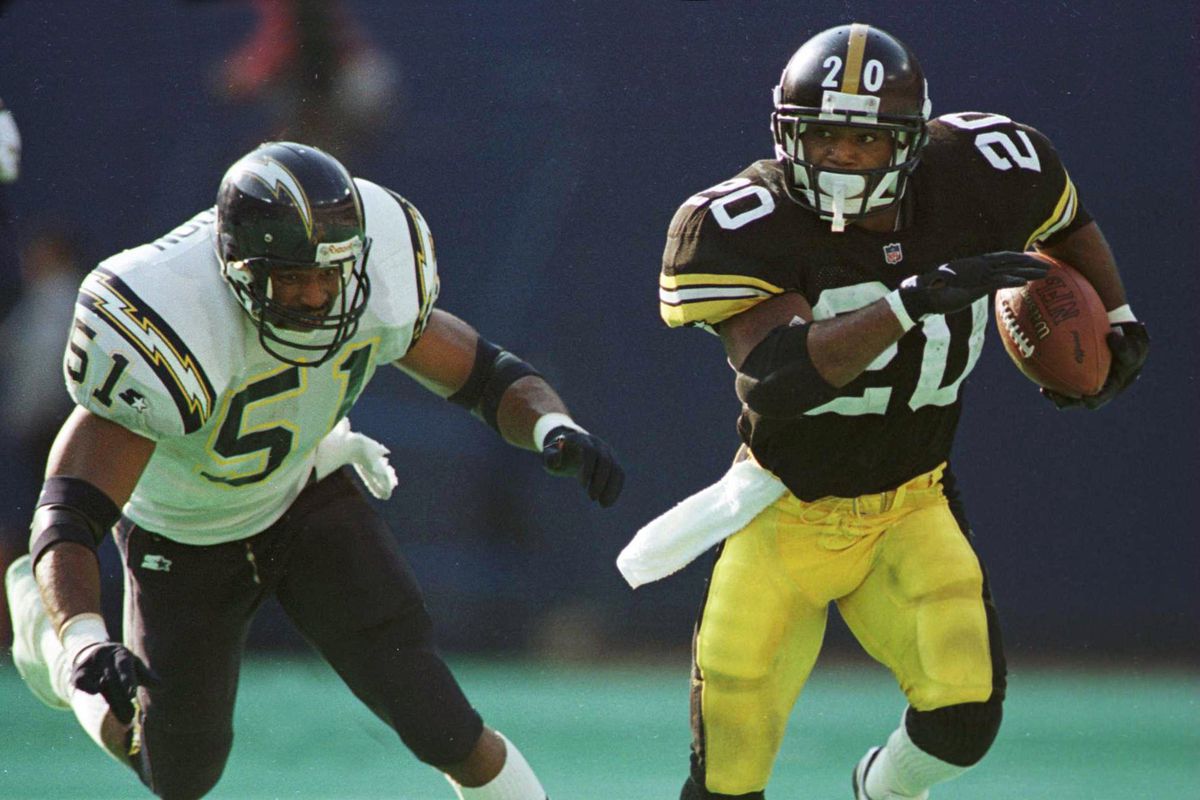
Although the Steelers’ regular season dominance did not translate into a Super Bowl victory that year, as they fell to the New England Patriots in the AFC Championship Game, their 2004 season remains one of the most impressive in NFL history. The emergence of Roethlisberger as a franchise quarterback and the team’s overall performance set the stage for future success, including a Super Bowl victory the following season.
The Steelers’ running game was the foundation of their offensive strategy. Jerome Bettis, despite battling injuries, rushed for over 900 yards and 13 touchdowns. Complementing Bettis was Duce Staley, who provided a change of pace and added another 830 rushing yards. This powerful one-two punch allowed the Steelers to control the clock and wear down defenses.
Defensively, the Steelers employed a 3-4 scheme that relied on the athleticism and versatility of their linebackers. Troy Polamalu’s ability to play near the line of scrimmage or drop back in coverage made him a disruptive force. Joey Porter and James Farrior provided leadership and playmaking ability, while the defensive line, led by Casey Hampton, clogged running lanes and pressured quarterbacks.
7. 2011 Green Bay Packers (15-1)
The 2011 Green Bay Packers, coming off a Super Bowl victory the previous season, continued their winning ways with a 15-1 regular season record. Led by MVP quarterback Aaron Rodgers, the Packers offense was a finely tuned machine that consistently outperformed opponents.
Rodgers’ mastery of the quarterback position was evident as he threw for over 4,600 yards and 45 touchdowns, with a passer rating of 122.5, one of the highest in NFL history. The Packers’ receiving corps, including Jordy Nelson, Greg Jennings, and Jermichael Finley, provided Rodgers with a plethora of options, making their offense nearly unstoppable.

Despite their regular season success, the Packers were unexpectedly ousted in the NFC Divisional Round by the New York Giants. This early playoff exit was a disappointing end to an otherwise stellar season. Nevertheless, the 2011 Packers are remembered for their offensive brilliance and Rodgers’ exceptional performance, which solidified his status as one of the premier quarterbacks in the league.
The Packers’ offense in 2011 was a model of efficiency and explosiveness. Jordy Nelson had a breakout season, catching 68 passes for 1,263 yards and 15 touchdowns. Greg Jennings and Jermichael Finley also posted impressive numbers, contributing to an aerial attack that could strike from anywhere on the field. The offensive line, anchored by Josh Sitton and Bryan Bulaga, provided Rodgers with excellent protection, allowing him to make plays downfield.
Defensively, the Packers had their struggles, finishing near the bottom of the league in total defense. However, they were opportunistic, leading the league in interceptions with 31. Charles Woodson and Tramon Williams were key playmakers in the secondary, while Clay Matthews provided pressure off the edge. Despite the defensive inconsistencies, the Packers’ offense was so potent that they often outscored their opponents, masking many of the defensive deficiencies.
8. 1986 New York Giants (14-2)
The 1986 New York Giants, under head coach Bill Parcells, posted a 14-2 regular season record en route to their first Super Bowl victory. The Giants’ success was driven by a ferocious defense, spearheaded by linebacker Lawrence Taylor, who had one of the most dominant seasons in NFL history.
Lawrence Taylor, often regarded as the greatest defensive player ever, won the NFL MVP award, a rare achievement for a defensive player. His relentless pass-rushing and disruptive play were central to the Giants’ defensive prowess. The team’s defense, known as the “Big Blue Wrecking Crew,” featured other key players like Harry Carson and Carl Banks, making them a formidable unit.
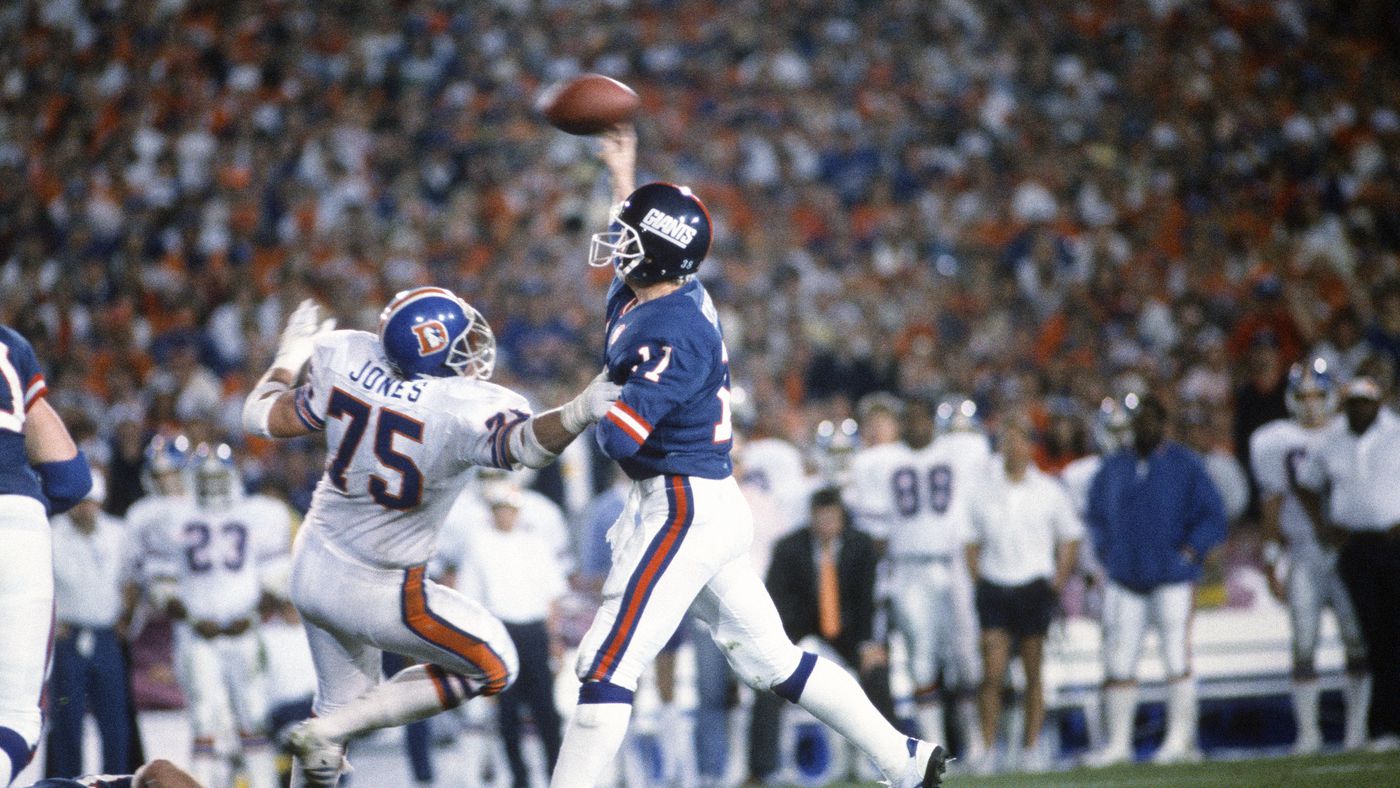
Offensively, the Giants relied on a strong running game led by Joe Morris and efficient quarterback play from Phil Simms. This balanced approach, combined with their dominant defense, made the Giants a tough team to beat. Their 1986 season culminated in a 39-20 victory over the Denver Broncos in Super Bowl XXI, cementing their legacy as one of the greatest teams in NFL history.
Lawrence Taylor’s impact on the game was profound. His ability to rush the passer, stop the run, and drop into coverage made him a unique weapon. Taylor finished the season with 20.5 sacks, an astounding number for a linebacker. His presence on the field altered how offenses played, often requiring double and triple teams, which freed up other players to make plays.
The Giants’ offense was methodical and efficient. Joe Morris rushed for 1,516 yards and 14 touchdowns, providing the backbone of the offensive attack. Phil Simms, while not posting gaudy numbers, managed the game effectively, throwing for over 3,400 yards and 21 touchdowns. The offensive line, featuring Bart Oates and Brad Benson, provided the necessary protection and run blocking to support the balanced attack.
9. 1976 Oakland Raiders (13-1)
The 1976 Oakland Raiders, coached by John Madden, were a dominant force in the NFL, finishing the regular season with a 13-1 record. Known for their rugged style and aggressive play, the Raiders embodied the spirit of their head coach and the city they represented.
The Raiders’ offense, led by quarterback Ken Stabler, was both dynamic and efficient. Stabler’s ability to execute Madden’s game plan, combined with the receiving talents of Fred Biletnikoff and Cliff Branch, made the Raiders a potent offensive threat. Running back Mark van Eeghen provided a strong ground game, balancing the offensive attack.
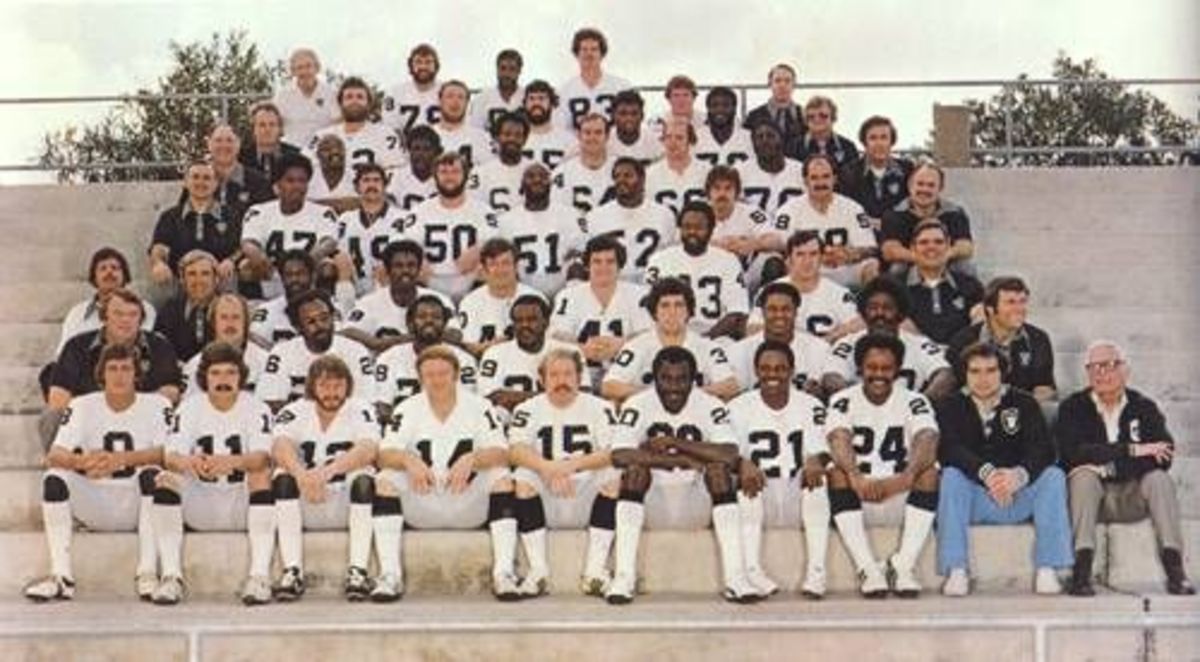
Defensively, the Raiders were equally impressive, featuring players like Willie Brown, Jack Tatum, and Ted Hendricks. Their physical and intimidating style set the tone for games, often overwhelming opponents. The Raiders’ 1976 season culminated in a decisive 32-14 victory over the Minnesota Vikings in Super Bowl XI, earning Madden his first and only Super Bowl title and solidifying the team’s place in NFL history.
Ken Stabler’s leadership and poise under pressure were crucial to the Raiders’ success. Known for his clutch performances, Stabler threw for over 2,700 yards and 27 touchdowns. With his precise route running and sure hands, Fred Biletnikoff was a reliable target, while Cliff Branch provided the deep threat that stretched defenses.
The Raiders’ defense was fierce and intimidating. Willie Brown’s coverage skills and leadership were vital, while Jack Tatum’s hard-hitting style set the tone in the secondary. Ted Hendricks, known as “The Mad Stork,” was versatile and disruptive, able to play both the run and pass effectively. This combination of offensive firepower and defensive toughness made the Raiders a formidable opponent.
10. 1983 Washington Redskins (14-2)
The 1983 Washington Redskins, under head coach Joe Gibbs, finished the regular season with a 14-2 record, showcasing one of the most balanced and efficient teams in NFL history. Their success was built on a powerful offense and a resilient defense, which together created a formidable opponent for any team.
Quarterback Joe Theismann led the offense with precision, throwing for over 3,700 yards and 29 touchdowns. The Redskins’ running game, led by John Riggins, was a key component of their success, providing a relentless ground attack that wore down defenses. The offensive line, known as “The Hogs,” was instrumental in both the running and passing games, providing Theismann with ample protection and opening lanes for Riggins.
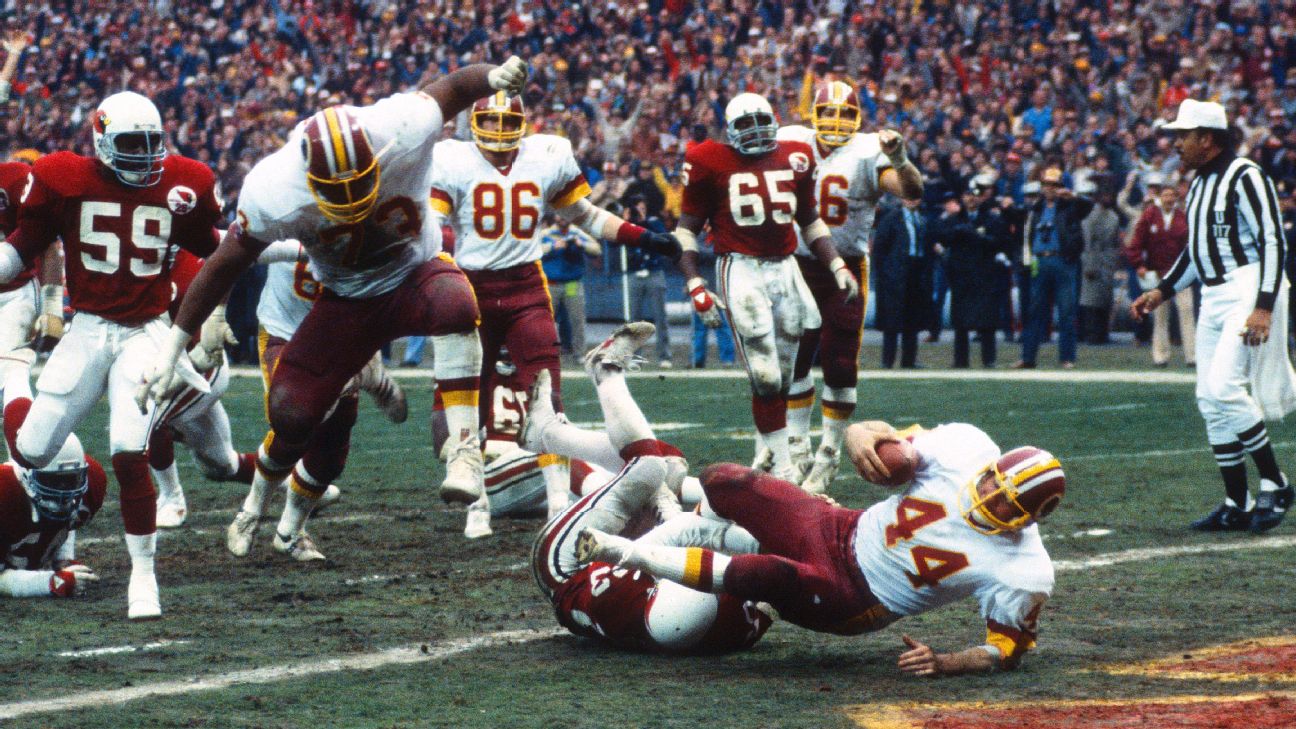
Defensively, the Redskins were anchored by a strong front line and a secondary that created numerous turnovers. Key players like Dexter Manley and Dave Butz were central to their defensive success, disrupting opposing offenses and making crucial plays. Although the Redskins fell short in Super Bowl XVIII, losing to the Los Angeles Raiders, their regular season performance remains one of the best in NFL history, highlighting their dominance and balanced approach to the game.
Joe Theismann’s ability to manage the game and make big plays when needed was crucial to the Redskins’ success. He had a variety of targets, including wide receivers Art Monk and Charlie Brown, who provided reliable options in the passing game. John Riggins, known for his punishing running style, rushed for over 1,300 yards and 24 touchdowns, setting a then-record for rushing touchdowns in a season.
The Redskins’ defense, known for its toughness and ability to create turnovers, was led by Dexter Manley, who recorded 11 sacks. Dave Butz, a dominant force on the defensive line, anchored the front four and helped shut down opposing running games. The secondary, featuring Darrell Green and Vernon Dean, was opportunistic, contributing to a defense that was as formidable as the offense.
Final Thoughts
The NFL regular season is a true test of a team’s skill, endurance, and strategy. The teams highlighted in this article not only excelled but set standards of excellence that have become benchmarks for future generations. Each of these teams brought something unique to the game, whether it was an innovative offensive scheme, a dominating defense, or a perfect blend of both. Their records are not just numbers but stories of triumph, resilience, and the relentless pursuit of greatness.
As the NFL continues to evolve, these records stand as reminders of what is possible. They inspire players, coaches, and fans alike, providing a rich tapestry of history that enriches the sport. The pursuit of perfection in the NFL regular season is a challenging and elusive goal, but these teams have shown that with the right combination of talent, strategy, and determination, greatness is within reach.


